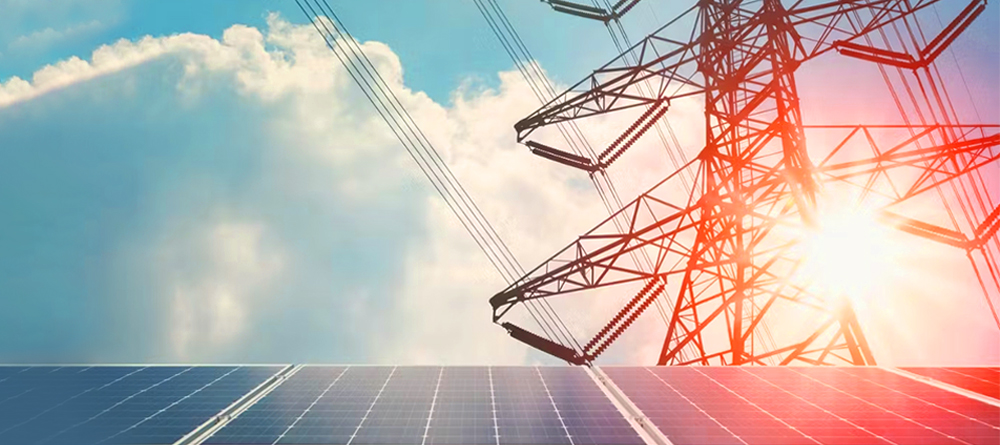Blog Highlight – Explore Solar Net Metering and Distributed Energy Resources in this beginner’s guide, demystifying key concepts and benefits.
There has been an increased focus on using sustainable energy solutions in recent times. And this has brought about a plethora of different terminologies that can be pretty confusing for newcomers. Two such concepts of sustainable energy solutions about the use of solar energy are distributed resources and net metering.
This is why, in this blog, we shall try to discuss these two terms in detail and understand their significance, which will prove useful for people looking to install solar energy solutions for their homes or businesses.
What Is Solar Net Metering?
Solar panels can produce electricity when the sun is up and shining. However, it may happen that the solar owner may not use all of the energy produced by the solar panels, which can create a surplus of solar energy.
So, what do you do with this surplus energy?
Well, instead of letting this energy go to waste, you feed it back to your electricity grid. And this process is known as net metering for solar.
Net metering solar allows you to sell your excess solar energy back to the grid in exchange for credits that you can subtract from your electricity bill for the next month. Thus, in simpler words, you can sell excess solar energy back to your electricity company.
Below are the benefits of solar net metering in further detail
1. Financial Savings
The most immediate benefit for consumers through net metering is the potential to save money on electricity bills. By generating their own electricity, especially during peak sun hours, homeowners can significantly reduce their reliance on grid-supplied electricity and thereby lower their monthly bills.
2. Return On Investment
The installation of solar panels and associated systems has a capital investment. With net metering, the ROI can be increased as excess energy generated can be sold back to the grid or credited for future use, which makes the initial investment more attractive over time.
3. Enhanced Grid Resilience
Distributed energy generation, like that from solar panels under net metering schemes, can enhance the resilience of the electrical grid. By decentralizing energy production, the grid becomes less susceptible to large-scale outages and disruptions.
The Philippines government has only allowed net metering for solar systems that are below 100 kW in size. However, since the scheme has failed to provide significant growth, the government plans to install around 15 GW of clean energy systems by the end of 2030.
Understanding Distributed Energy Resources (DER)
While net metering focuses on how solar energy interacts with the grid, DER is a broader concept that encompasses a range of decentralized energy sources and technologies.
Imagine you have a solar system at home and another at a solar plant nearby, both of which feed excess energy back to the grid. Now, since the electricity is generated from sources different from a single power station, a very inconvenient situation has been addressed – Power outages!
Moreover, on the 29th of November, 2022, a set of DER rules was published by the Energy Regulatory Commission (ERC) of the Filippino Government, which took effect from 14th December, 2022.
The rule decides on the size of DERs, pertaining to their installation process.
- DERs with renewable energy (RE) for on-grid systems have a capacity of 100kW to 1MW, with a 30% export limit.
- Off-grid DERs with RE for on-grid systems are up to 1MW, also with a 30% export limit.
- DERs can use any energy tech, on- or off-grid, for end-user use, but the owner and user must be different entities.
Further concepts related to distributed energy resources are detailed below
1. Decentralization
Most traditional energy systems are centralized. This means power is generated at large plants and then distributed to consumers. DER, on the other hand, involves smaller-scale power generation located closer to the end-users, such as homes, businesses, or communities.
2. Types of DER
Apart from solar panels, DER can include wind turbines, small-scale hydroelectric plants, battery storage systems, and even combined heat and power systems. The idea here is to utilize diverse energy sources closer to where the energy is needed, reducing transmission losses and increasing overall efficiency.
3. Grid Stability
One of the challenges of integrating DER into the grid is ensuring stability. Since these resources can be intermittent (like solar power only being available during the day), proper management and integration techniques are crucial. Advanced technologies, like smart inverters and grid management systems, are being developed to ensure the smooth integration of distributed energy resource management systems into existing grids.
Final thoughts
Solar Net Metering and Distributed Energy Resources represent the future of sustainable energy. Thus, for beginners, it’s essential to grasp these concepts as they offer insights into how individual choices, like installing solar panels, can have greater benefits for the energy landscape.
And embracing solar net metering and DER not only offers potential financial benefits but also contributes to a more resilient and sustainable energy future for us all.
Get the best solar panel solutions for your home or business, only at Nativ Techniks. Call us at +639176310032, or mail us at wecare@nativtechniks.com for more details.



Leave a Reply